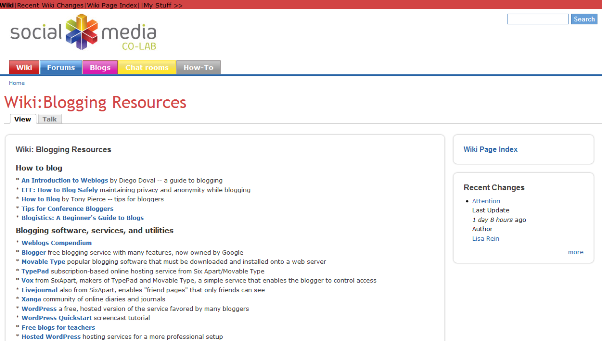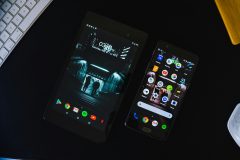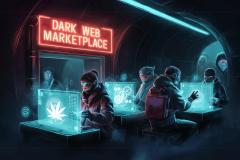The Social Media Classroom (SMC) is a new project started by Howard Rheingold which offers an open-source Drupal-based web service to teachers and students for the purpose of introducing social media into the classroom. The service includes tools like forums, blogs, wikis, chat, social bookmarking, RSS, microblogging, widgets, video conferencing, and more. The SMC is more than just a collection of new media tools repurposed for educational use, though. The end goal of the service is to move education away from being a unidirectional delivery of knowledge to become a more collaborative learning process.

Why A Social Media Classroom?
The SMC is meant to supplement, not replace, the face-to-face interaction that occurs in the classroom. According to Howard, when he tried to introduce new media tools into his first Wi-Fi-equipped classroom, he was surprised by the blank looks on so many of the students’ faces when he told them that he expected them to blog and edit the wiki. Since he was so familiar with the power of Web 2.0 tools and was surrounded by people who felt the same, he hadn’t realized how many college students didn’t actually have experience using these types of 21st century tools. This sparked an idea to build a new social media platform designed specifically for use in an educational setting. And thus, the Social Media Classroom was born.
What’s Included
The SMC includes all the familiar social media tools from blogs to RSS to videos and wikis and even microblogging. All are integrated into one seamless environment where the different applications are available from navigational tabs at the top of the page just like any ordinary web site has. Everyone who is a member of a particular instance of the Social Media Classroom will initially see a personalized start page upon login that aggregates their own different posts to the various parts of the site.

The SMC will be available to educators both an installable version for self-hosting and as a hosted version (coming soon) for those less tech-savvy.
The Classroom and The Collaboratory
The project itself has two components called The Classroom and The Collaboratory. The The Collaboratory (or Colab) is simply the web service part of the project which is also made available to anyone, even non-educators. It includes both the downloadable install file and the soon-to-launch hosted service.
The Classroom, on the other hand, is the entire web site available at www.socialmediaclassroom.com which contains, among other things, the curriculum materials. In these materials you’ll find all sorts of information about the different types of social media as well as links to various resources across the web.

21st Century Education
Social media and the participatory web have had a greater impact on our world beyond just how we connect and socialize with our friends online. The base concepts surrounding how these interactions take place has influenced a whole new generation of web users who now expect to participate in discussions and not be dictated to…whether online or offline. We’ve seen this influence occur in the workplace, where millennial employees demand to know “why” they’re being asked to do something instead of just doing it. We’ve also seen it effect the business of marketing as social media users now feel strongly that brands (companies) should be listening and conversing with them in an open, transparent matter. So why not bring the social media revolution to the classroom, too? It only makes sense.
Those involved with this project believe that today’s students need more than a class where a professor lectures for an hour – that has no hope of engaging their interest. Students need a classroom where learning is a more participatory experience and where the tools they use in their everyday lives – social networking, videos, chat, aren’t checked at the door. The Social Media Classroom is an important project to make those types of tools available to educators who might not be as up to speed with the latest technology, while also simplifying the use of those tools through the introduction of a single platform that integrates the best of the Web 2.0 world.
Perhaps the project doesn’t introduce anything new that hasn’t already been available to the tech-savvy, but its ease-of-use and educational slant make its introduction an impressive and potentially game-changing move for the educational system as we know it.

















